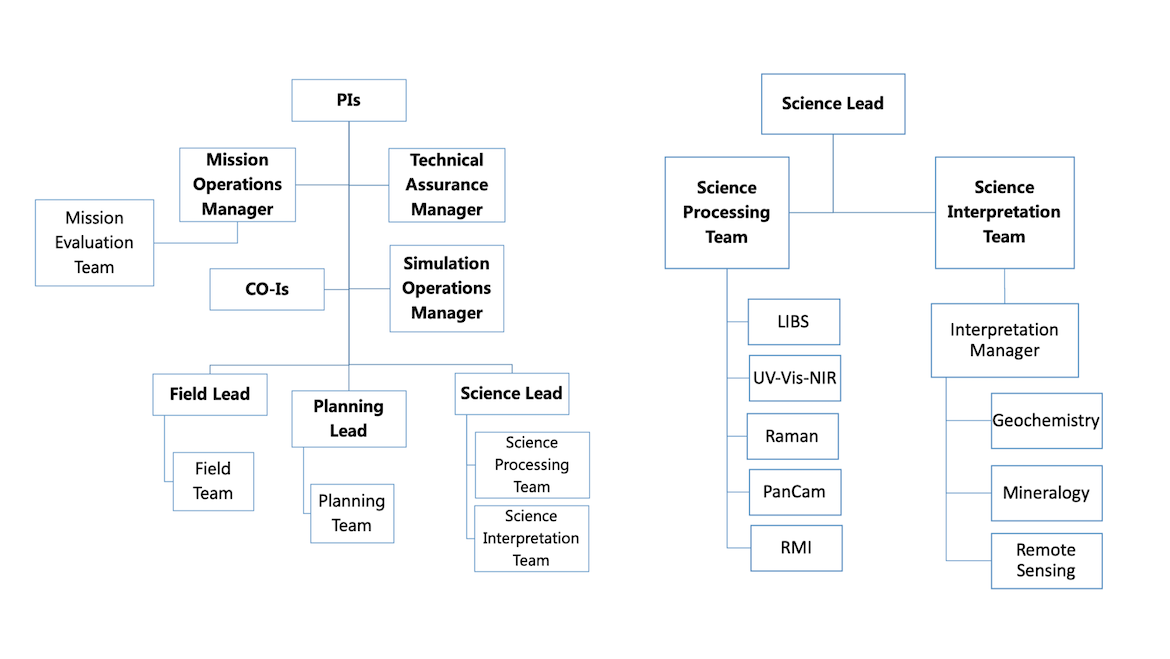Mission Control
It is well known that the ability to communicate effectively with superiors, colleagues, and staff is essential, no matter what industry you work in. All members of the mission gain experience in interpersonal communication and leadership by working in teams under challenging conditions. Effective teamwork and communication skills are critical for the success of space missions, where teams can be comprised of people from diverse backgrounds. Within a real-time mission, such as CanMoon, mission control is a dynamic room of operations that requires a high level of organization in order to succeed.
The mission is primarily divided into three main teams: the field team, the planning team, and the science team. The science team is further divided into a processing and interpretation team, allowing for data analysis to occur while operations are ongoing. Each instrument on the rover has a lead that is in charge of processing and sequence commands for the said instrument. The planning team is directly in control of the rover and takes the commands from the science team and inputs them into the rover. The field team is the rover in Lanzarote, Spain and will be taking the measurement and commands issued from mission control at Western University. A full breakdown of the mission control organization can be found below.

Accessibility Transcript
This image is a flowchart highlighting the managerial organization of mission control.
- Principle Investigators
- Mission Operations Manager
- Mission Evaluation Team
- Technical Assurance Manager
- Co-Investigators
- Field Lead
- Field Team
- Planning Lead
- Planning Team
- Science Lead
- Science Processing Team
- Science Interpretation Team
- Mission Operations Manager
The Science Team is further broken down:
- Science Lead
- Science Processing Team
- Laser-induced breakdown spectroscopy (LIBS)
- Ultraviolet-visibile-Near-infrared spectroscopy (UV-VIS-NIR)
- Raman Spectroscopy
- Panorama Camera (PanCam)
- Remote Microscopic Imager
- Science Interpretation Team
- Geochemistry
- Mineralogy
- Remote Sensing
- Science Processing Team
Past Missions
Over the past decade, CPSX has become a hub of analogue mission deployments within Canada and the United States. Most recently in 2015 and 2016, CPSX led two Mars sample return mission in Utah, USA where the CSA's rover, MESR, was commanded directly from Western University's mission control to identify a limited number of samples to return to "Earth". CPSX prizes itself on training the next generation of planetary explorers.
Beyond becoming an intensive training experience, these analogue missions provide an opportunity to learn important lessons for real planetary science mission operations. They also provide a unique tool for exploring geologically interesting sites of interested and understanding their geologic past. Below we have highlighted several of the scientific journals and publications that have come out of these missions.

